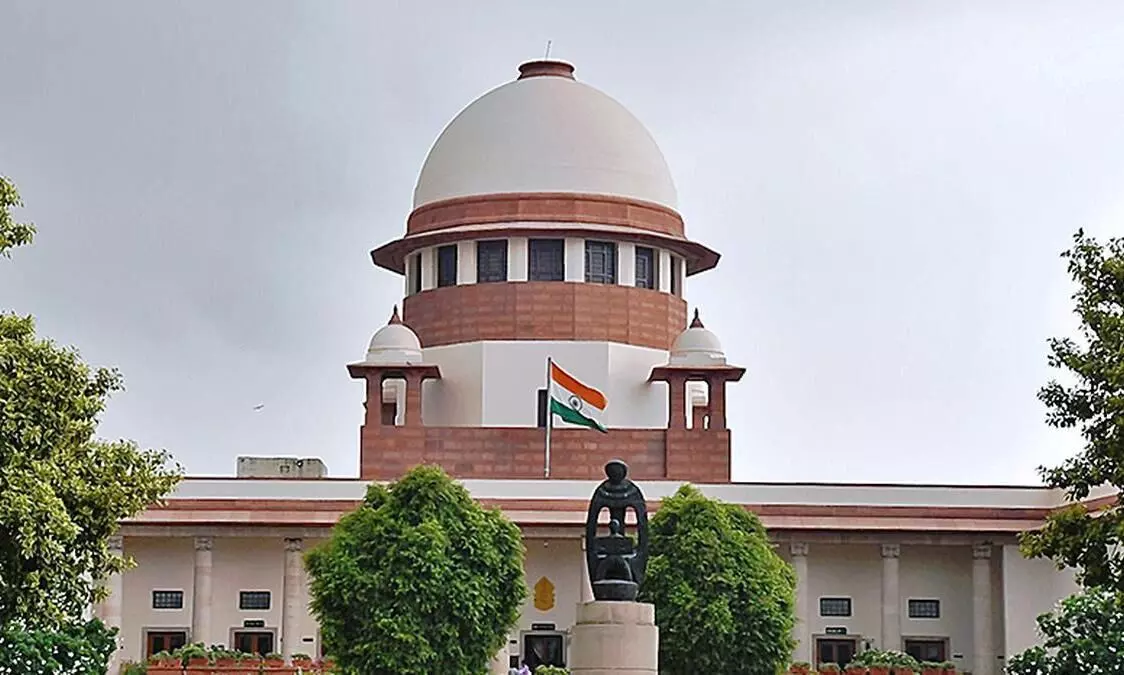
A diamond that has lost its guarantee: Supreme Court into 75th year
text_fieldsChief Justice of India D Y Chandrachud recently said that the judiciary has to begin “difficult conversations”. He was speaking at a function of the inauguration of the Diamond Jubilee Year of the establishment of the Supreme Court which was on January 28, 1950. The CJI said that the challenges faced by the judiciary should be recognised and remedied. Some examples of those challenges he listed include a backlog of cases, “adjournment culture”, long vacations, procedural complications, under-representation of various sections and other structural deficiencies. However, he didn’t seem to mention the core disease that has affected the judiciary. Therefore, many think that the Chief Justice's hope that the Judiciary can regain its lost relevance if the aspects he listed are fixed, is unfounded. Those critics point out that real diagnosis of the disease and bold remedial efforts are what is needed, and that partial fixes alone will not restore credibility. Senior advocate Dushyant Dave recently said in an interview that as the Supreme Court approaches its diamond jubilee, the judiciary is at its weakest in the history of modern India. The nation also witnessed Supreme Court sitting judge Abhay Oka stating recently during a seminar that the judiciary has failed to fulfil its duties and that the faith of the common man in the Judiciary has eroded significantly. Chief Justice Chandrachud also said in the meeting of the top legal officials of the Commonwealth countries that there is a need for reforms in the judiciary.
But who should do that? Where has the credibility of the judiciary been compromised? It is based on the current events that Dave openly stated that the judiciary has turned into a “majoritarian judiciary” thereby rendering the country's secularism futile. There are situations where the courts even yield to the unreasonable obstinacy of the government, especially in cases where the courts have to contend with the government. The Supreme Court has failed to ensure the integrity of justice and the rule of law in many cases, including the abrogation of Article 370, the Electoral Bond case (which is still pending), the transfer of some cases by the bench, and the appointment of judges. The Judiciary, which behaves indifferently, allowing the bulldozer to reign violating the laws, continues to unlawfully extend the appointment tenure of the top official repeatedly. Dave points out that when the rule of law and the administration of justice break down, the victims are is the ordinary citizens. Senior advocate Sanjay Hegde points out some examples of the Supreme Court violating even its own judgments. He cites as an example the Supreme Court giving in to the Centre’s pressure to extend the tenure of the Chief Secretary, who was a headache for the Kejriwal government in Delhi, even after his retirement. Courts today are violating the judgment given by the Supreme Court clarifying the Places of Worship Act 1991 in the case of various mosques; and the apex court remains a silent spectator. It was also the same Supreme Court which defended the appointment of a person, who was accused of making communal statements, as a high court judge, stating that eligibility and suitability are two different things and that they “can’t go into suitability”.
Just like crony capitalism and crony journalism, has a crony judiciary come into existence in the country? Which court does the Executive fear, when it is ready to invite to the “pran pratishtha” the members of the Judiciary, who were with them at every step of demolishing the mosque and building a temple on its site? A study shows that out of 103 Supreme Court justices who retired after 1999, 73 (70 per cent) of them subsequently accepted government posts. Ranjan Gogoi, who became a member of the Rajya Sabha as the ruling party's nominee within six months, and Abdul Naseer, the judge of the Ayodhya case bench who accepted the post of governor, are among them. On the other hand, there are Justices Chelameswar, J.S. Khehar, R.M. Lodha, and S.H. Kapadia, who set a brilliant example by deciding not to accept job offers from the government. One thing is true. The quality, impartiality and credibility of the Indian judiciary have declined. It should definitely be remedied. It may require conversations and modifications. And, of course, there is one thing that is essential – unyielding determination.







